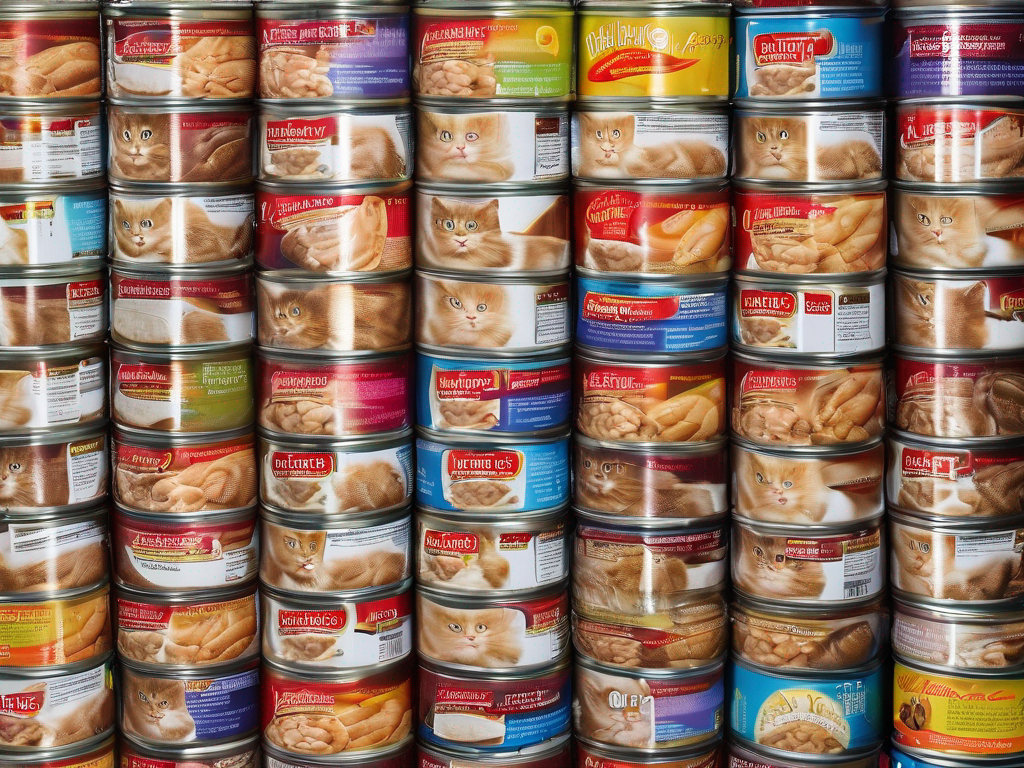
Best Practices for Rotating Canned Cat Food Stock to Avoid Expiration
Get Your Free Food Safety Cheat Sheet
30 most common foods with instant answers. Print it and stick it on your fridge—completely free!
Best Practices for Rotating Canned Cat Food Stock to Avoid Expiration
Canned cat food is a convenient and nutritious option for your feline friend. However, to ensure optimal freshness and safety for your pet, it's essential to practice proper stock rotation. By rotating your canned cat food stock effectively, you can prevent expiration, maintain quality, and provide your cat with the best possible diet. In this blog post, we will discuss the best practices for rotating canned cat food stock to avoid expiration. (Canned cat food)
Why is Rotating Canned Cat Food Stock Important?
Ensures Freshness
- Rotating canned cat food stock helps ensure that your pet is consuming fresh and high-quality food.
- Fresh food is more appetizing for cats and contains optimal nutritional value.
Prevents Expiration
- Canned cat food has a limited shelf life, and rotating stock helps prevent expiration and spoilage.
- Expired cat food can be harmful to your pet's health and lead to digestive issues.
Saves Money
- By rotating your canned cat food stock, you can avoid wastage due to expired products.
- Proper rotation ensures that you use older inventory first, saving you money in the long run.
How to Rotate Canned Cat Food Stock
First In, First Out (FIFO) Method
- Adopt the FIFO method to ensure that older canned cat food is used before newer purchases.
- Place newly purchased cans at the back of the storage area and move older cans to the front for easy access.
Organize by Expiration Date
- Check the expiration dates on each can of cat food and organize them accordingly.
- Place cans with the nearest expiration dates at the front of the storage area for prioritized use.
Regular Inventory Checks
- Conduct regular inventory checks to monitor the expiration dates of your canned cat food stock.
- Make a list of expiring products and plan your cat's meals accordingly to utilize them before they expire.
Use a Rotation System
- Implement a clear rotation system, such as labeling cans with purchase dates or expiration dates.
- This system helps you keep track of which cans to use first and ensures no cans are overlooked.
Store Properly
- Store canned cat food in a cool, dry place away from direct sunlight.
- Avoid storing cans near heat sources or in humid environments, as this can affect the food's quality and shelf life.
Safety Tips for Rotating Canned Cat Food Stock
Inspect Cans Before Use
- Before feeding your cat, inspect the cans for any signs of damage, such as dents, rust, or leaks.
- Do not feed your cat from damaged cans, as they may be contaminated or spoiled.
Follow Feeding Guidelines
- Adhere to the recommended feeding guidelines provided by the cat food manufacturer.
- Overfeeding or underfeeding your cat can lead to health issues, so ensure you are providing the right amount of food.
Proper Handling
- Wash your hands before and after handling canned cat food to prevent contamination.
- Use clean utensils and dishes when serving the food to your cat to maintain hygiene.
Conclusion
By following these best practices for rotating canned cat food stock, you can ensure that your feline companion receives fresh, safe, and nutritious meals. Remember to prioritize older cans, organize by expiration date, conduct regular inventory checks, and store the food properly to prevent expiration and maintain quality. Your cat's health and well-being are worth the extra effort in managing their food stock effectively. With these tips, you can provide your pet with the best possible diet and enjoy their companionship for years to come.
Visit our main article on [canned cat food](/food/canned cat food) for more information and product recommendations. (Canned cat food)
Related Posts
Here are some other articles you might find helpful:
Authoritative Food Safety References
These agencies and university labs inform every tip and health precaution we publish.
USDA FoodKeeper – Cold Storage Guidelines
Official refrigerator, freezer, and pantry timelines maintained by the U.S. Department of Agriculture.
Visit USDA FoodKeeperFDA Produce Safety Rule & Grower Guidance
Field-to-fridge handling practices that prevent contamination of fruits, vegetables, and leafy greens.
Visit FDA Produce SafetyCDC Foodborne Illness Prevention Hub
Surveillance-backed guidance on pathogens, symptoms, and steps to reduce foodborne illness risk.
Visit CDC Food SafetyUC Davis Postharvest Technology Center
University research detailing optimal storage atmospheres for produce after harvest.
Visit UC Davis PostharvestPenn State Extension – Home Food Preservation & Safety
Peer-reviewed extension bulletins on safe canning, chilling, and reheating practices.
Visit Penn State ExtensionGet Your Free Food Safety Cheat Sheet
30 most common foods with instant answers. Print it and stick it on your fridge—completely free! Want more? Upgrade to the complete guide with 70+ foods.
Scan your food directly and get instant safety info using our AI-powered camera feature.